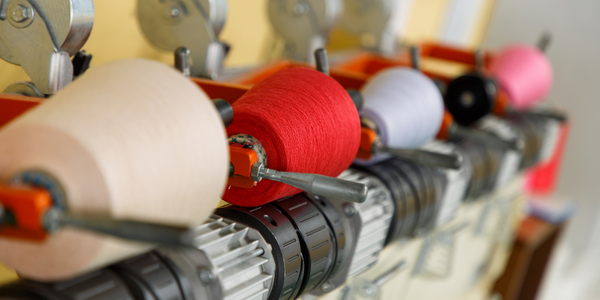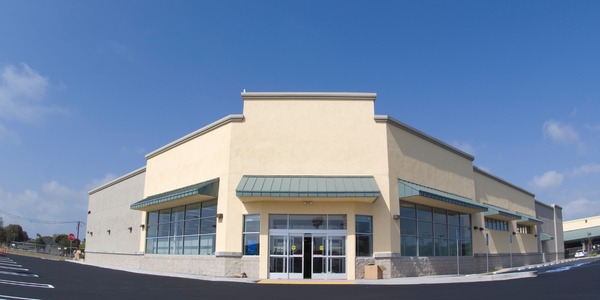Customer Company Size
Mid-size Company
Region
- America
Country
- United States
Product
- DocuWare
- Kodak i1320
- Kodak i1440
Tech Stack
- EDI transmissions
- AS/400 based ERP system
Implementation Scale
- Enterprise-wide Deployment
Impact Metrics
- Productivity Improvements
- Cost Savings
- Customer Satisfaction
Technology Category
- Application Infrastructure & Middleware - Data Exchange & Integration
- Functional Applications - Enterprise Resource Planning Systems (ERP)
Applicable Industries
- Apparel
Applicable Functions
- Sales & Marketing
Use Cases
- Inventory Management
- Supply Chain Visibility
Services
- System Integration
- Software Design & Engineering Services
About The Customer
Jaya Apparel Group is a designer and manufacturer of clothing for high-end boutiques and large department stores ranging from Walmart to Saks 5 Avenue. A midsized player in the fashion world, the company employs 200 designers, sales reps and customer service agents working mainly from Los Angeles and a smaller satellite office in New York. The company contracts to have the goods manufactured overseas in China, Korea and Vietnam. Jaya Apparel Group’s large department store customers use Electronic Data Interchange or EDI transmissions to place and amend orders. The company was able to process the orders electronically but had no way to store and manage the information other than printing it out and filing it in banker’s boxes.
The Challenge
Jaya Apparel Group, a designer and manufacturer of clothing for high-end boutiques and large department stores, was facing several challenges. The company was able to process orders electronically but had no way to store and manage the information other than printing it out and filing it in banker’s boxes. This paper intense process meant that important information contained on documents such as customer PO’s, pick tickets, bills of lading, invoices, shipping tallies was difficult to retrieve. Researching receivable payment discrepancies was a complex process that was often so cumbersome that the company was unable to refute customer claims. The company needed an electronic document management system to improve their workflow by routing documents through a multi-step process, without using email. The solution needed to integrate with their AS/400 based ERP system and be able to automatically index and archive EDI transmissions, as well as serve as an archive for hand-written documents which would be scanned and imported.
The Solution
After evaluating several systems, DocuWare was implemented along with two scanners, the Kodak i1320 and i1440. The company’s existing Toshiba and Xerox MFPs also became part of the solution. Paper-based workflows were examined and digital processes created. Jaya Apparel Group worked with their Authorized DocuWare Partner to conduct internal surveys to identify the opportunities to capture paper and digital documents, as well as e-mail and move the company to more efficient business processes. Today, EDI information is automatically indexed and stored in DocuWare. Handwritten information such as customer PO’s from their 800 boutique customers are manually indexed serving as a permanent record for which orders were placed. The almost instantaneous access to order information for both the customer service department and accounting department offsets the time spent on manual indexing. Jaya Apparel Group outsourced the scanning and indexing of two years of customer orders, in order to resolve outstanding short payment claims they may still collect on.
Operational Impact
Quantitative Benefit

Case Study missing?
Start adding your own!
Register with your work email and create a new case study profile for your business.
Related Case Studies.

Case Study
Fire Alarm System and Remote Monitoring Sytem
Fire alarm systems are essential in providing an early warning in the event of fire. They help to save lives and protect property whilst also fulfilling the needs of insurance companies and government departments.Fire alarm systems typically consist of several inter-linked components, such as smoke detectors, heat detector, carbon monoxide, manual call points, sounders, alarm and buzzer. The fire alarm system should give immediate information in order to prevent the fire spread and protect live and property.To get maximum protection a shoe manufacturer in Indonesia opted for a new fire alarm system to monitor 13 production sites spread over 160 hectars. Although the company had an existing fire alarm system, it could not be monitored remotely.It was essential that the new system would be able to be monitored from a central control room. It needed to be able to connect to the existing smoke detector and manual call point. Information should be easily collected and passed on to the Supervisory Control and Data Acquisition (SCADA) system. Furthermore, the system should have several features such as alarm management, auto reporting, being connected to many client computers without additional cost, and run 24/7 without fails. The company also needed a system which could be implemented without changing the architecture of the existing fire alarm system.

Case Study
IoT Applications and Upgrades in Textile Plant
At any given time, the textile company’s manufacturing facility has up to 2,000 textile carts in use. These carts are pushed from room to room, carrying materials or semi-finished products. Previously, a paper with a hand-written description was attached to each cart. This traditional method of processing made product tracking extremely difficult. Additionally, making sure that every cart of materials or semi-finished products went to its correct processing work station was also a problem. Therefore, the company desired an intelligent solution for tracking assets at their factories. They also wanted a solution that would help them collect process data so they could improve their manufacturing efficiency.

Case Study
Retailer Uses RFID Scanner to Improve Efficiency
Patrizia Pepe wished to improve the logistics of their warehouse: accepting incoming goods from their production sites, movement of items throughout
the warehouse, and packaging of goods for distribution to the retail locations. They initially tried to use barcodes for this function. Because barcodes must be individually scanned within a line-of-sight, the acceptance of goods coming into the warehouse was too time consuming. Working with the University of Florence, Patrizia Pepe instituted a five-month pilot project beginning in August of 2009 to test the validity of an RFID solution. The pilot involved tagging of about 60,000 items for the second seasonal collection, and convinced the company to move forward with tagging all items.

Case Study
Monitoring and Controlling Automatic Mixing and Dispensing Machines
As technology advances, textile manufacturing has been transformed from a labor-intensive to a partially or fully automated industry. Automation is significant in all segments of textile production - from spinning to printing, and textile machinery manufacturers are constantly searching for new technologies and automation processes will increase the productivity of their machines. The color paste mixing and dispensing machine is an essential part of the printing and dyeing process. With the advantage of automatically computerized controls and database management, the system can significantly improve its dispensing precision, working efficiency and production quality as well as reducing material consumption.









